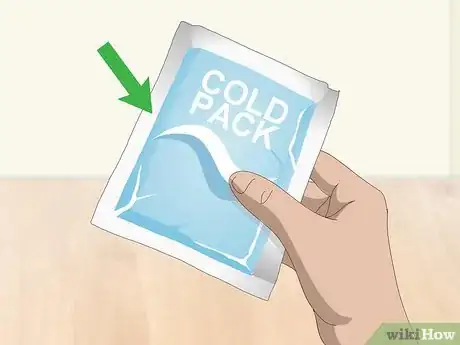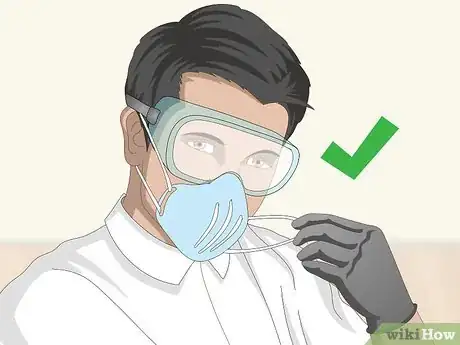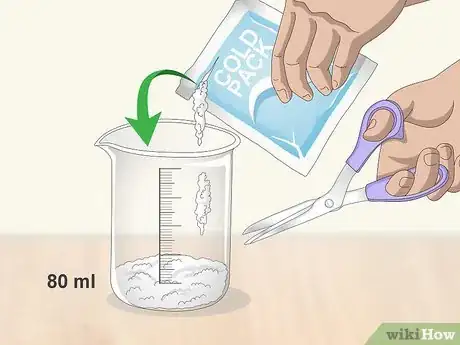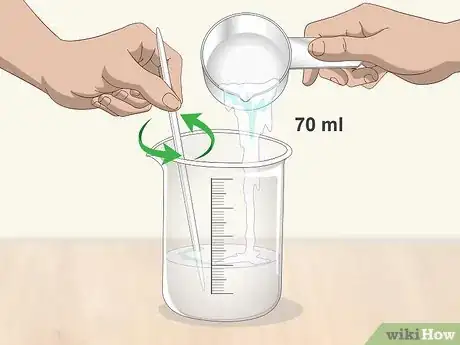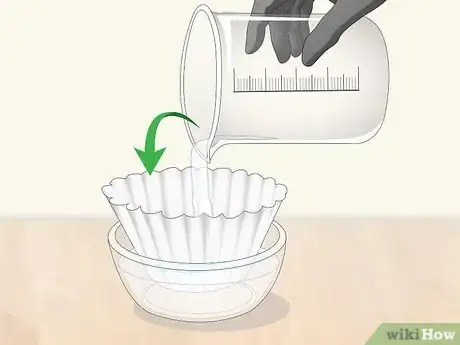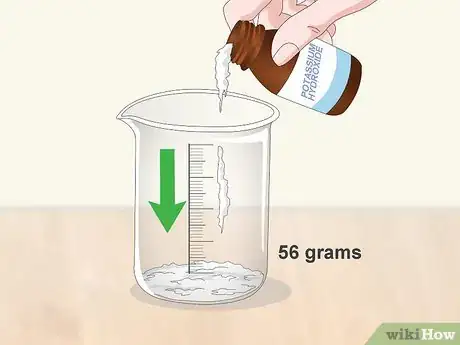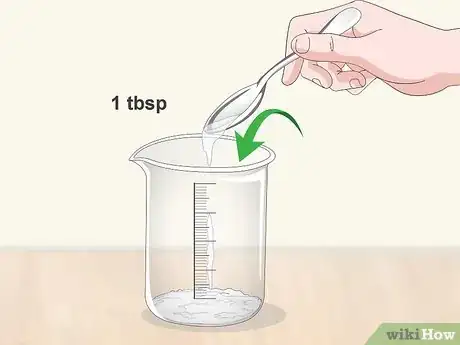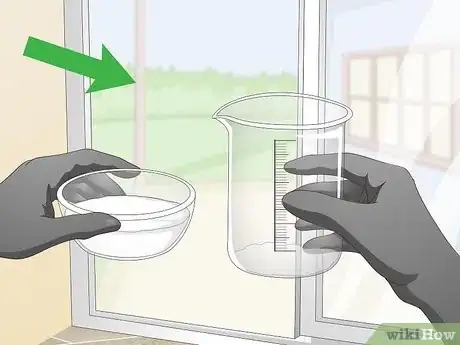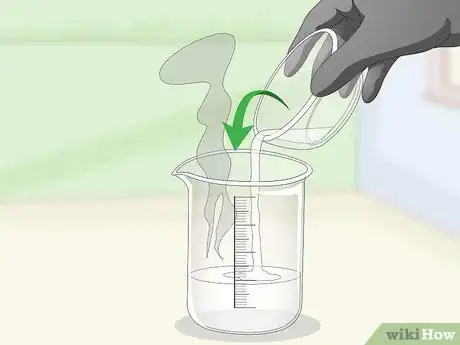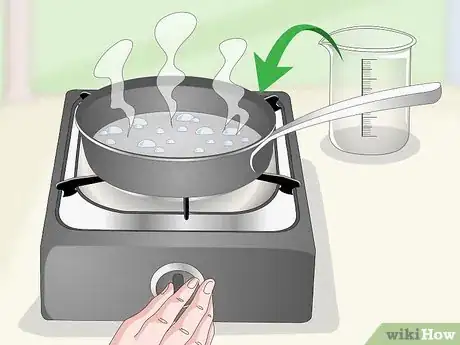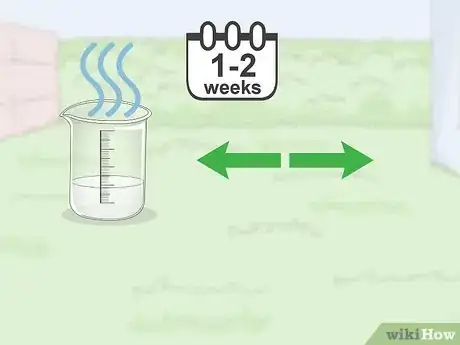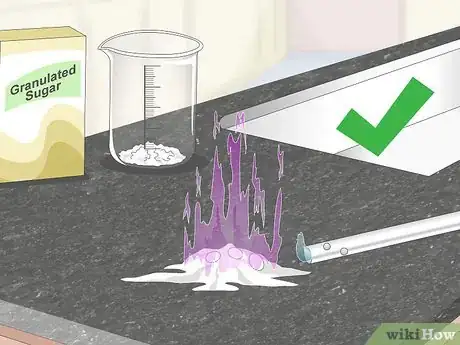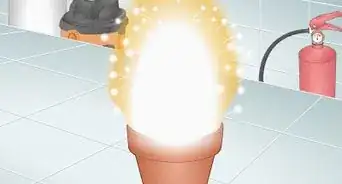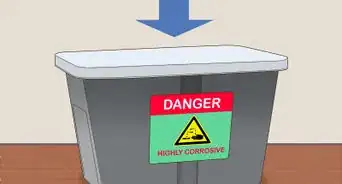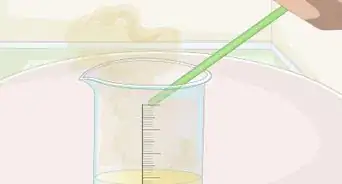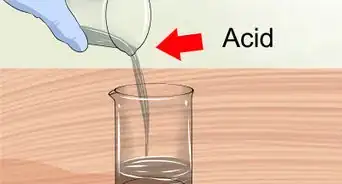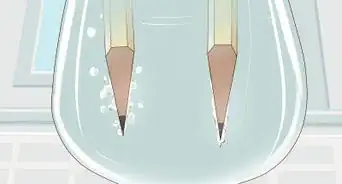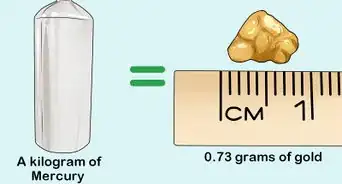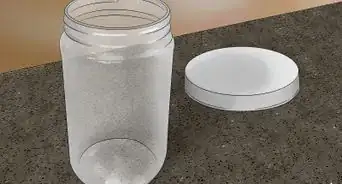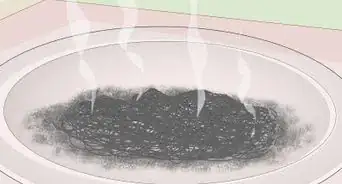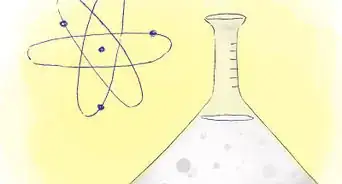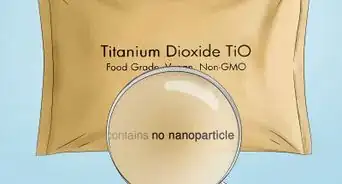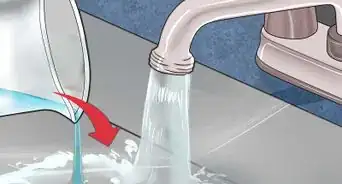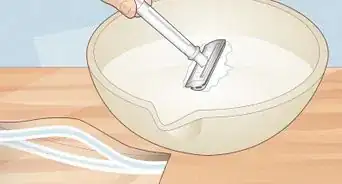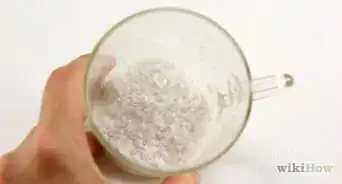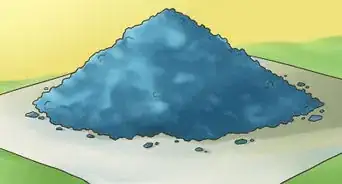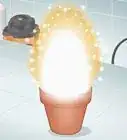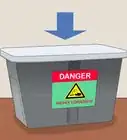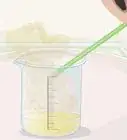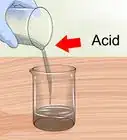This article was co-authored by Bess Ruff, MA. Bess Ruff is a Geography PhD student at Florida State University. She received her MA in Environmental Science and Management from the University of California, Santa Barbara in 2016. She has conducted survey work for marine spatial planning projects in the Caribbean and provided research support as a graduate fellow for the Sustainable Fisheries Group.
There are 7 references cited in this article, which can be found at the bottom of the page.
wikiHow marks an article as reader-approved once it receives enough positive feedback. In this case, 86% of readers who voted found the article helpful, earning it our reader-approved status.
This article has been viewed 423,345 times.
Potassium nitrate (saltpeter) is a useful chemical for science experiments, fertilizers, and gunpowder since it’s an ionic salt. Collecting bat guano from caves used to be the main way to obtain potassium nitrate but these days, there's a much easier way to prepare it if you have experience working with chemicals. All you need is a cold pack, potassium hydroxide, and water to prepare this versatile substance. With time and the right precautions, you can safely make potassium nitrate.
Steps
Making the Ammonium Nitrate Solution
-
1Purchase a cold pack that contains ammonium nitrate. Ammonium nitrate, the active ingredient in many cold packs, is essential for making potassium nitrate. Choose a cold pack that has ammonium nitrate as a primary active ingredient.[1]
- If you don't have enough ammonium nitrate from the first cold pack, purchase a second one as needed.
- You can find cold packs containing ammonium nitrate from most pharmacy or health stores. You can also buy pure ammonium nitrate online or from laboratory supply stores.
-
2Put on goggles, a gas mask, and a pair of rubber gloves. Making potassium nitrate involves handling substances that can irritate your eyes, lungs, and skin. To prevent injuries while making this chemical, wear safety goggles, a gas mask, and thick rubber gloves.
-
3Cut open the pack and pour out 80 millilitres (2.8 imp fl oz; 2.7 fl oz) of the ammonium nitrate. Use scissors to cut lengthwise along the top of the cold pack. Pour out the contents of the pack into a large measuring bowl marked for millimeters.[2]
- If you don't have any scissors nearby, you can use a sharp knife instead.
-
4Add 70 millilitres (2.5 imp fl oz; 2.4 fl oz) of hot water and stir the mixture. Fill a measuring cup with 70 millilitres (2.5 imp fl oz; 2.4 fl oz) of hot water—hot enough to notice the temperature but not boiling or near-boiling. Pour the hot water into the ammonium nitrate and stir thoroughly with the water.[3]
- Pour slowly to prevent the solution from splashing up and causing accidental skin irritation.
- Continue stirring until the ammonium nitrate dissolves completely into the hot water.
-
5Purify the ammonium nitrate with a coffee filter. Some cold packs use ammonium nitrate and a mixture of other chemicals that can dilute your final product. To prevent this, place a coffee filter over a separate measuring bowl and pour the ammonium nitrate solution slowly over the empty bowl.[4]
- When you've finished pouring, discard the coffee filter immediately to prevent it from contaminating the purified solution.
Combining Ammonium Nitrate and Potassium Hydroxide
-
1Pour 56 grams (2.0 oz) of potassium hydroxide into a measuring bowl. Potassium hydroxide is the second key ingredient to making potassium nitrate. Weigh a clear measuring bowl first and use the “Tare Weight” function if you can to make it easier to measure. Then add 56 grams (2.0 oz) of potassium hydroxide to the bowl to make sure you have a precise amount.[5]
- You can buy dry potassium hydroxide from many hardware or chemical supply stores.
-
2Add 0.5 imp fl oz (0.96 US tbsp) of water in small increments to dissolve the potassium hydroxide. While preparing the potassium hydroxide, add just enough water to dissolve the dry substance. Pour in 1 US tbsp (15 mL) of water at a time, stirring thoroughly, and add more if the potassium hydroxide remains dry.[6]
- The potassium hydroxide should have a thick, smooth texture, like a soup or pudding.
-
3Take the potassium hydroxide and ammonium nitrate substances outdoors. Combining these substances can release toxic ammonium gas. Along with wearing a double filter gas mask, take your substances outdoors to prevent serious injuries from the ammonium gas.[7]
- If you're working in a laboratory, you can also combine the chemicals underneath a fume hood.
-
4Combine the 2 solutions slowly. Once you've found a well-ventilated area outdoors, pour the potassium hydroxide solution slowly into the ammonium nitrate. As you do, make sure your gas mask is secure to prevent irritation or serious injuries from the ammonium gas released.[8]
Purifying the Potassium Nitrate
-
1Boil the solution over a stove outdoors. Pour the solution in a pot and place it over an outdoor stove. Turn the stove to medium heat and let the solution boil for 20-30 minutes, or until a ring of crystals begins to form around the outside.[9]
- Keep the gas mask on while boiling the solution, as it will still release toxic ammonium gas.
- Do not reuse the pot for cooking after preparing ammonium nitrate with it.
-
2Leave the ammonium nitrate outdoors to evaporate for 1-2 weeks. Pour the boiled solution into a measuring bowl and place it on a flat surface at least 100 feet (30 m) away from any homes or buildings. Let the ammonium nitrate evaporate for up to 2 weeks, or until all that's left in the measuring bowl is white crystals.[10]
- Always wear a gas mask while handling liquified ammonium nitrate, and keep other people or animals (especially children and pets) away from the solution while it evaporates.
- After the ammonium nitrate has evaporated into solid crystals, it will stop releasing ammonium gas.
-
3Test the potassium nitrate for reactivity. To make sure you have purified potassium nitrate crystals, mix a small sample of them with an equal amount of granulated sugar. Set the mixture on fire in a controlled area, like a laboratory, using a lighter. If you've created pure potassium nitrate, it should produce purplish flames.[11]
- Handle the potassium nitrate and lighter with care and in a controlled area to prevent injuries.
Community Q&A
-
QuestionAre the final nitrate crystals the potassium nitrate?
 Zane RameyCommunity AnswerYes. And they can be redissolved, filtered and purified if they appear to contain foreign chemicals or impurities.
Zane RameyCommunity AnswerYes. And they can be redissolved, filtered and purified if they appear to contain foreign chemicals or impurities. -
QuestionWhat is potassium chloride? Where can I buy it?
 Community AnswerPotassium chloride is a metal halide salt that is used in medications, fire extinguishers, fertilizers, and salt substitutes. It has many other applications as well. Potassium chloride is available at many stores as a water softener (one brand name to look for is Diamond Crystal Sodium Shield), and can be purchased online.
Community AnswerPotassium chloride is a metal halide salt that is used in medications, fire extinguishers, fertilizers, and salt substitutes. It has many other applications as well. Potassium chloride is available at many stores as a water softener (one brand name to look for is Diamond Crystal Sodium Shield), and can be purchased online. -
QuestionWhat about the gel ones? Do they produce the same outcome?
 Community AnswerProbably not. Even if they did, I believe the disposable one-time use ones would be cheaper and yield a better result.
Community AnswerProbably not. Even if they did, I believe the disposable one-time use ones would be cheaper and yield a better result.
Warnings
- Do not make potassium nitrate if you have no experience working with chemicals to make sure you're taking the right precautions. You can always order potassium nitrate at some chemical supply stores, instead.⧼thumbs_response⧽
- The chemicals used in making potassium nitrate can be corrosive on bare skin. Wear goggles and rubber gloves throughout the entire process to prevent skin irritation or other injuries.⧼thumbs_response⧽
- Use a gas mask at all times while combining and distilling the potassium nitrate to prevent injuries from the ammonium gas. Additionally, never combine potassium hydroxide and ammonium nitrate indoors.⧼thumbs_response⧽
Things You'll Need
- Goggles
- Gas mask
- Rubber gloves
- Cold pack or 80 grams (2.8 oz) of dry ammonium nitrate
- Measuring bowl
- Home scale
- Scissors
- Water
- Stirring stick
- Coffee filter
- 56 grams (2.0 oz) of potassium hydroxide
- Outdoor stove
- Stove pot
References
- ↑ https://www.poison.org/articles/whats-inside-ice-packs-201
- ↑ https://www.thoughtco.com/how-to-make-potassium-nitrate-608270
- ↑ https://www.thoughtco.com/how-to-make-potassium-nitrate-608270
- ↑ https://www.thoughtco.com/how-to-make-potassium-nitrate-608270
- ↑ https://www.thoughtco.com/how-to-make-potassium-nitrate-608270
- ↑ https://sciencenotes.org/make-ammonium-nitrate/
- ↑ https://sciencenotes.org/make-ammonium-nitrate/
- ↑ https://www.youtube.com/watch?v=XxhZkDAOeQ8&feature=youtu.be&t=119
- ↑ https://www.youtube.com/watch?v=J5n7JhFZ6sE&feature=youtu.be&t=164
About This Article
To safely make potassium nitrate, put on gloves, a gas mask, and goggles, and cut open a cold pack that contains ammonium nitrate. Mix the ammonium nitrate with hot water, and pour the mixture through a coffee filter to purify it. Then, dissolve 56 grams of potassium hydroxide in water, and go outside to mix the potassium solution and purified ammonium nitrate together. Once they're combined, stay outside to boil the solution for 10-20 minutes, and leave the liquid outside to evaporate for 1-2 weeks. Scroll down for advice on how to test the potassium nitrate for reactivity!
